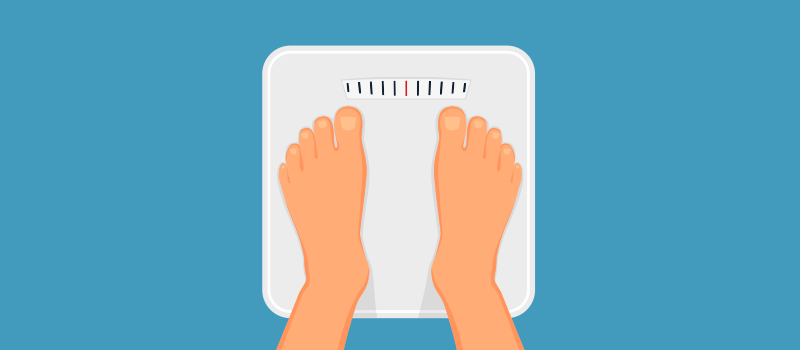What’s the Buzz
The Bee Healthy Blog
What to Do for an Asthma Attack Without an Inhaler?

Asthma is a chronic disease of the lungs in which the symptoms come and go. During an asthma attack, the airways in the lungs become narrower, causing difficulty breathing.
Asthma attacks can range in severity from mild to severe. You may need to seek emergency medical help for a severe asthma attack. However, it is often possible to treat asthma at home using a rescue inhaler. This device contains prescription medications that help widen the airways and make it easier for you to breathe.
People who have asthma should always keep their inhaler on hand to relieve breathing difficulty. With that said, it is not unusual for asthmatics to find themselves without their inhaler on some occasions.
If you suffer from asthma and don’t have your rescue inhaler on hand, there are some things you can do to improve symptoms until you can get medical attention.
Please continue reading to learn some tips on managing a mild asthma attack without an inhaler. Remember to always seek immediate medical attention for severe asthma symptoms.
What are asthma attack symptoms?
People with asthma are usually familiar with the symptoms of asthma attacks, which can include shortness of breath (trouble breathing), chest pain, chest tightness, wheezing, coughing, fast heart rate, and a low score on the peak flow meter (if you have this device for home use).
Severe asthma attacks are a medical emergency. You should call 911 or seek emergency medical attention from a medical professional if:
- you have severe shortness of breath
- your symptoms continue to worsen even after treatment
- you are unable to speak, or short sentences leave you breathless
- you need to strain your chest muscles to breathe
- your lips or face have a bluish tinge
- you are starting to feel drowsy or fatigued
What to do for asthma attacks when you don’t have an inhaler?
Here are some home remedies to manage an asthma attack without an inhaler.
Sit upright
Sitting up straight helps to open up your airways. Bending or lying down can constrict your airways even further and worsen your asthma symptoms.
Practice deep breathing
Take long, slow, deep breaths. Breathe in through your nose and breathe out through your mouth. Try to prevent hyperventilation with short, fast breaths. Learn some breathing exercises. These exercises can make breathing easier and help reduce breath tightness and other asthma symptoms. Examples include pursed lips breathing, belly breathing, diaphragmatic breathing, and yoga breathing.
Try to stay calm
Anxiety can cause chest tightness and make it even harder for you to breathe. Try to remain as calm as possible during an asthma attack. Of course, this is easier said than done when you’re gasping for air. It may help to play some music or distract yourself by watching TV while waiting for the asthma attack to subside or for medical help to arrive.
Remove yourself from asthma triggers
Common triggers of asthma attacks include pet dander, cigarette smoke, air pollution, and cold weather. These triggers can not only cause an asthma attack but also make your symptoms worse. If possible, avoid triggers and remove yourself from a trigger when you’re having an attack. Move to an area with clean air, preferably an air-conditioned environment, during an asthma attack.
Drink a warm, caffeinated beverage
Beverages such as tea or coffee contain caffeine, which can help lung function in asthma patients. Caffeine, because of its chemical composition, is naturally a bronchodilator (dilates the bronchial tubes) so more air can enter.
Complementary therapies for asthma symptoms
Some people find that inhaling essential oils such as tea tree, chamomile, or eucalyptus oil helps their asthma symptoms. These essential oils are believed to have anti-inflammatory properties. However, there is no solid scientific evidence, peer-reviewed studies, or systematic reviews that prove they can relieve asthma symptoms or prevent attacks. You should not rely on these complementary therapies or use them instead of prescribed medications to improve breathing during asthma attacks.
Frequently Asked Questions
What is the best way of preventing an asthma attack?
The best way to prevent asthma attacks is to keep your asthma under control. You should get professional medical advice and take the long-term or quick-relief medications as prescribed by your doctor.
Long-term medications control airway inflammation and reduce the production of extra mucus to prevent asthma attacks. Rescue medications keep airways open and provide short-term relief from asthma symptoms.
You should also work with your healthcare provider to develop an asthma treatment plan that identifies and avoids asthma triggers. This includes ways to prevent respiratory infections and other health conditions that can be common triggers of asthma attacks. It’s also important to learn about the signs and symptoms of when to seek care from a critical care medicine doctor.
How do I open my airways during an asthma attack?
The quickest and most effective way to open your airways during an asthma attack is to use the quick-relief or rescue asthma medications prescribed by your doctor.
What’s the best body position for asthma attacks?
Experts say the best position during an asthma attack is sitting up straight because it allows air to enter your lungs freely. Bending over or lying down can further narrow the airways and make breathing difficult.
Wrapping Up
If you don’t have your rescue inhaler available during an asthma attack, you can do several things like sitting upright, taking steady breaths and deep breaths, staying calm, and moving away from triggers to help control your symptoms.
Remember that asthma attacks can be very serious. You should call 911 or seek emergency medical attention if your symptoms include severe difficulty breathing, severe wheezing, or chest tightness.
References:











SOCIAL